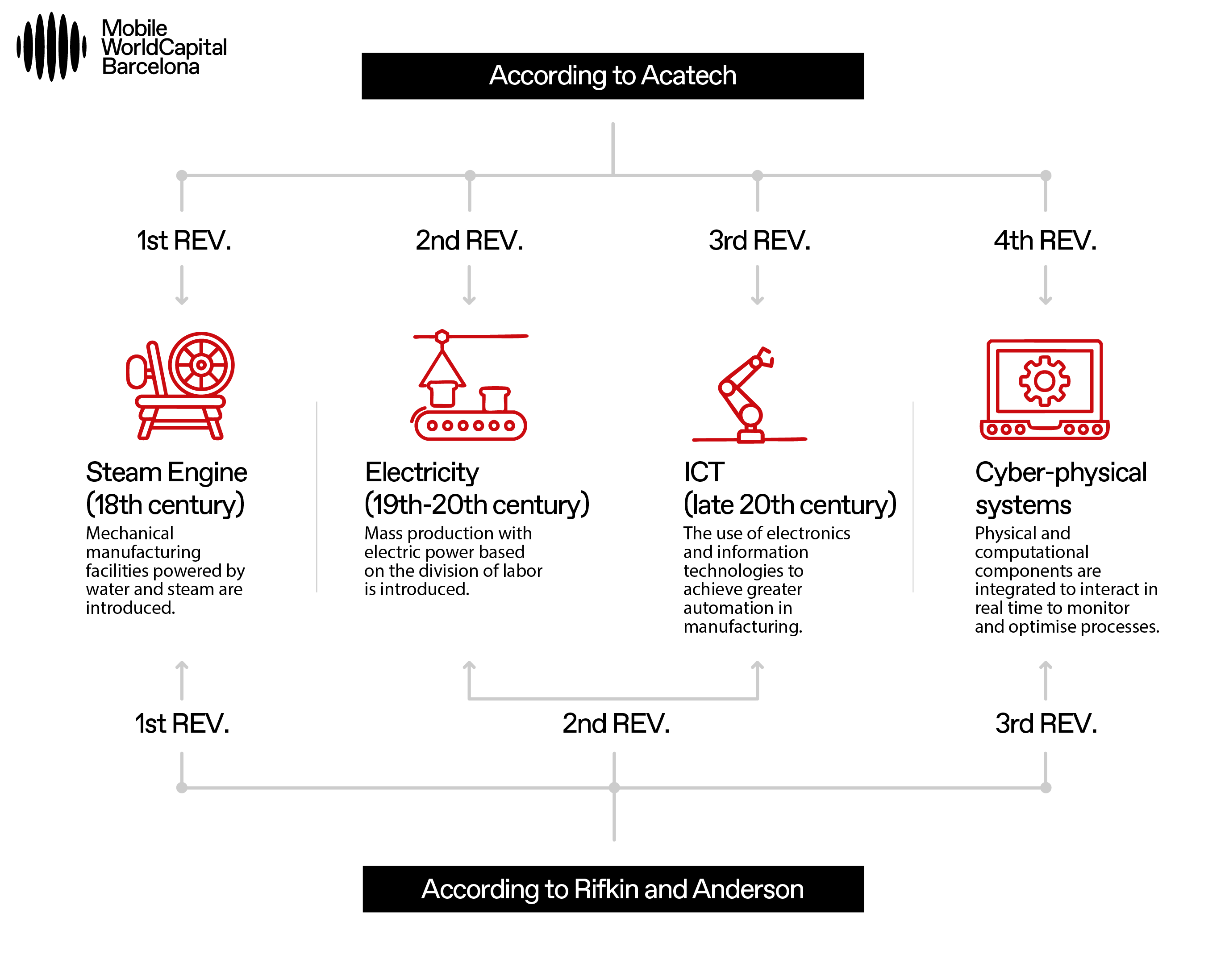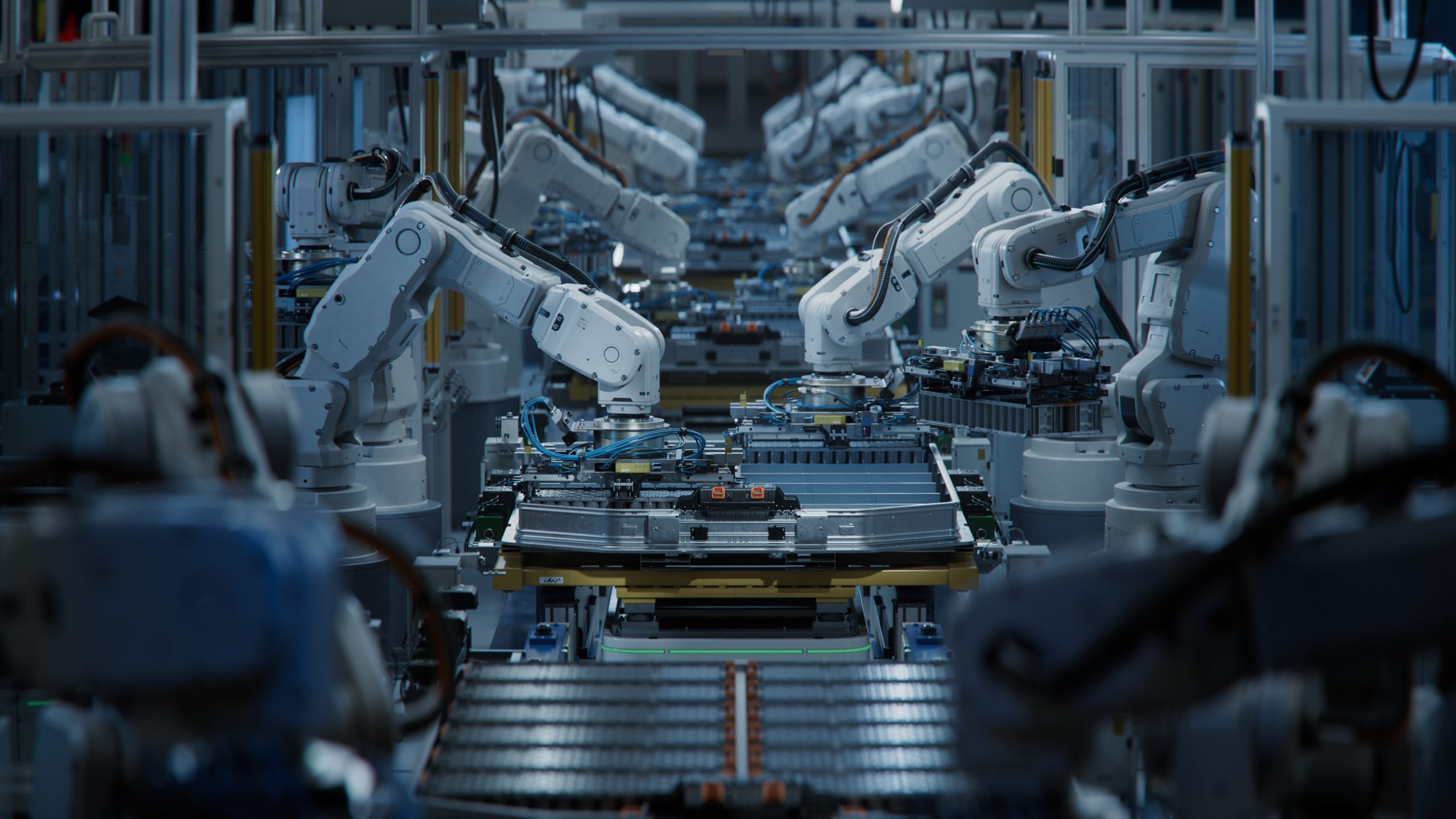From the steam engine to contemporary digital factories, industrial revolutions have marked the technological, economic, and social evolution of humanity. Although they have all brought significant changes, there is a debate about how many of these revolutions we have lived through and what defines each of them. Experts such as Jeremy Rifkin, Chris Anderson, and the creators of the Acatech model offer different perspectives, pointing out the complexity and implications of each of the technological advances that the industry has experienced throughout history.
According to Jeremy Rifkin, for an industrial revolution to occur, there must be an information revolution and an energy revolution. In his model, it is argued that humanity has gone through three industrial revolutions so far. The first and second were based on centralising energy and production through the implementation of the steam engine, and oil and electricity respectively in the production processes.
The third industrial revolution began with the rise of information and communication technologies (ICTs), but Rifkin warns that this stage has not been fully completed due to persistent dependence on fossil fuels. He argues that the true fourth industrial revolution has not arrived yet. To achieve it, it would require decentralising and democratising both energy and communications, promoting the use of renewable energy sources and smart grids that allow energy sharing similar to the way we share information on the Internet. It is also essential to create a more inclusive and resilient economy. In this new industrial revolution, citizens would move from being consumers to becoming prosumers, producing and distributing goods and services through collaborative and sustainable platforms.
On the other hand, Chris Anderson shares the idea that we are in the third industrial revolution but focuses on how accessible technologies are transforming production. According to Anderson, tools such as 3D printers, laser cutters, and affordable design software are enabling anyone with an idea to become a maker. This phenomenon, known as the maker revolution, not only democratises manufacturing but also lowers the barriers to entry for innovation. Online communities and crowdfunding platforms, such as Kickstarter, have further fuelled this dynamic, facilitating collaboration and access to resources for small entrepreneurs to develop and commercialise their products. Anderson sees this decentralised production movement as having the potential to redistribute economic power, empowering individuals and small businesses over large corporations.
In contrast to these perspectives, the Acatech model, developed in Germany, introduces a different view by arguing that we are currently experiencing the fourth industrial revolution. This approach identifies four main stages:
- First revolution: mechanisation of production by means of hydraulic power and steam.
- Second revolution: adoption of electricity, the internal combustion engine and mass production.
- Third revolution: digitalisation and the introduction of electronics and computers in industry.
- Fourth revolution or Industry 4.0: integration of advanced digital technologies into all aspects of production and everyday life.
According to Acatech, this fourth stage is based on the Internet of Things (IoT) and cyber-physical systems. Technologies such as artificial intelligence and big data, advanced robotics, 3D printing, and simulation, among others, are the pillars of the 4.0 Industry. This model highlights not only the technological advances that drive each revolution but also the economic and social changes that result from these advances.
The main difference between these three perspectives lies in the criteria used to define an industrial revolution. Rifkin and Anderson agree that we are still in the third revolution, as they consider that the mere incorporation of ICTs is not enough to justify a new stage. In contrast, Acatech argues that the combined impact of digital technologies and current economic and social changes marks the beginning of a fourth revolution. In addition to the Rifkin, Anderson, and Acatech models, there are others that attempt to categorise these transformations, and new proposals continue to emerge.

Despite their differences, these approaches share a common vision: industrial revolutions not only represent technological advances but also transform the way we live, produce, and interact with our environment. The transition to digital factories, sustainable energy, and a more collaborative economy poses great challenges and opportunities for improvement in the future. Beyond how many revolutions we have experienced, the real question is how the next stages will shape our relationship with technology, energy, and the planet.
Stay up to date about everything
Subscribe to stay up to date with the latest content from Mobile World Capital Barcelona.
